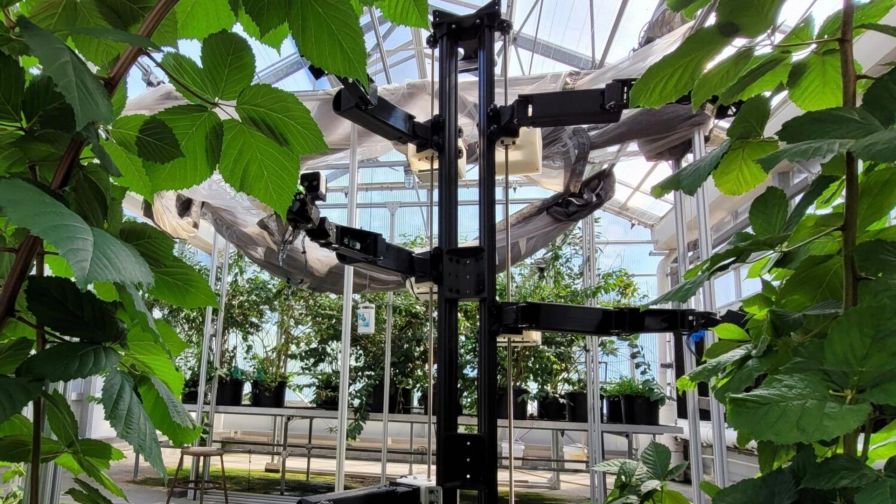How Your Employees Can Lead Your Greenhouse Safety Efforts
Managing a greenhouse comes with several responsibilities. Among those commitments: ensuring your team is safe.
Greenhouse work can involve exposure to chemicals, working at heights, operating machinery, and dealing with heavy objects. These factors can increase the risk of accidents, injuries, and even death if proper safety precautions aren’t followed.
Let’s look at how your own employees can take ownership of safety and manage risks throughout your business.
Benefits of Employee Safety
Empowering employee leaders to monitor and improve safety in the workplace can foster a safer, more productive environment. Here are just a few benefits you might see:
- Enhanced employee well-being: A safer workplace promotes the well-being of employees, which can lead to increased job satisfaction, morale, and productivity.
- Supports retention and recruitment: A strong emphasis on safety can help retain top talent and attract candidates who value a safe, organized work environment.
- Cost savings: Did you know the average medically consulted injury cost was around $42,000 in 2021 according to estimates from the National Safety Council? Fewer accidents and injuries can result in reduced costs related to your workers’ compensation claims, medical expenses, and legal fees.
- Enhances reputation and brand image: Maintaining a strong safety record signals to your customers, employees, and community that your business prioritizes employee well-being.
Appoint Safety Leaders
Safety can play a crucial role in the success of any horticultural business. However, building a culture of safety from scratch can be an overwhelming task if the responsibility is placed on a single manager. A strong program requires a collective effort.
Appointing safety leaders at all levels of your greenhouse is one step toward creating peer-to-peer accountability within your business. When choosing your safety leaders, look for traits that include:
- Experience leading employees
- An appreciation and respect for workplace safety
- Strong communication skills
- The respect of the employees they’ll be leading
Boost Your Internal Team’s Efforts
Communicate safety expectations and provide your internal leaders with the tools and confidence necessary to cultivate a culture of safety. Here are some quick tips:
Establish safety goals
A safety plan with measurable goals will provide your safety leaders with a clear roadmap.
- Identify key safety objectives that align with overall goals
- Conduct a comprehensive risk assessment to identify hazards
- Develop actionable strategies to mitigate risks and improve safety
- Establish measurable safety performance indicators
- Conduct regular safety audits and reviews
- Monitor progress and communicate updates
Lead by example
In order for your employee leaders to transform your safety culture, they have to practice what they preach and proactively address safety issues as they arise. This includes:
- Consistently demonstrating safe behaviors and following safety protocols. By actively following safety procedures, wearing appropriate personal protective equipment (PPE), and practicing safe work habits, leaders set a positive example for others to follow.
- Proactively identifying safety hazards. Regularly inspecting work areas, equipment, and processes to help identify potential hazards before they arise.
- Promptly resolving safety issues. When safety issues arise, taking immediate action to address and solve them.
- Encourage reporting and feedback. Promoting a culture where employees feel comfortable reporting safety concerns and providing feedback.
Share employee meeting responsibilities
To help reinforce engagement, share the responsibility of hosting regular safety meetings with your employees by:
- Fostering collaboration: Involve them in hosting safety meetings to create a comfortable environment where everyone has a voice.
- Reinforcing policies: By jointly leading safety meetings, you’re consistently communicating and reinforcing safety policies and procedures throughout the organization.
- Encouraging an open dialogue: Create opportunities for feedback, allowing employees to ask questions, share their observations, and contribute insights to improve safety practices.
- Strengthening accountability: Sharing hosting responsibilities reinforces peer-to-peer accountability, emphasizing that safety is a collective responsibility.
Celebrate safety successes
Celebrating individual safety success is a powerful way to reinforce a culture of safety within your organization—who doesn’t like to be celebrated? Here are some ideas:
- Acknowledging milestones and achievements in safety performance
- Highlighting individual contributions to safety
- Recognizing teams or departments for their safety efforts
- Sharing success stories and achievements throughout the organization
- Implementing rewards and incentives for exemplary safety performance
- Organizing celebratory events dedicated to safety
- Recognizing those who contribute to continuous safety improvement
Incorporate safety training into onboarding
Starting new hires with a strong emphasis on safety demonstrates its importance from day one. Here’s how you can enhance your onboarding process:
- Develop a comprehensive safety training program for all new hires
- Customize training content to align with job roles and responsibilities
- Clearly communicate safety guidelines and expectations
- Use interactive training methods for better engagement and retention
- Assign safety mentors to provide guidance on safety practices
- Regularly evaluate comprehension and progress during training
- Implement consistent refresher training
Reinforce policies with ongoing communication
Creating a safety program is not a set-it-and-forget-it deal. Instead, it requires continuous effort and ongoing communication to reinforce policies. Regular reminders through emails, newsletters, or meetings can help to keep safety at the forefront of your operations.
Remember, communication should be two-way. Encourage employees to provide feedback, ask questions, and share their experiences.
Creating a dedicated safety program takes time, planning, and employee buy-in. But you don’t have to do it alone. You can reach out to your insurer or a local expert to help you review — and enhance—your safety program. This article is just a start.
If you have questions or would like to learn more, please reach out. I’m happy to help.










